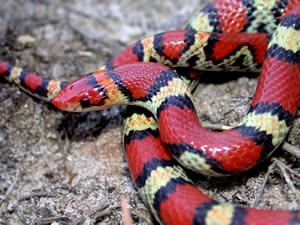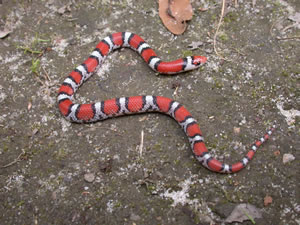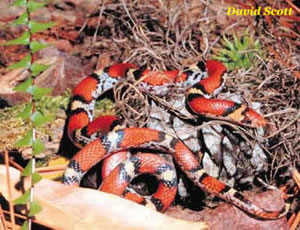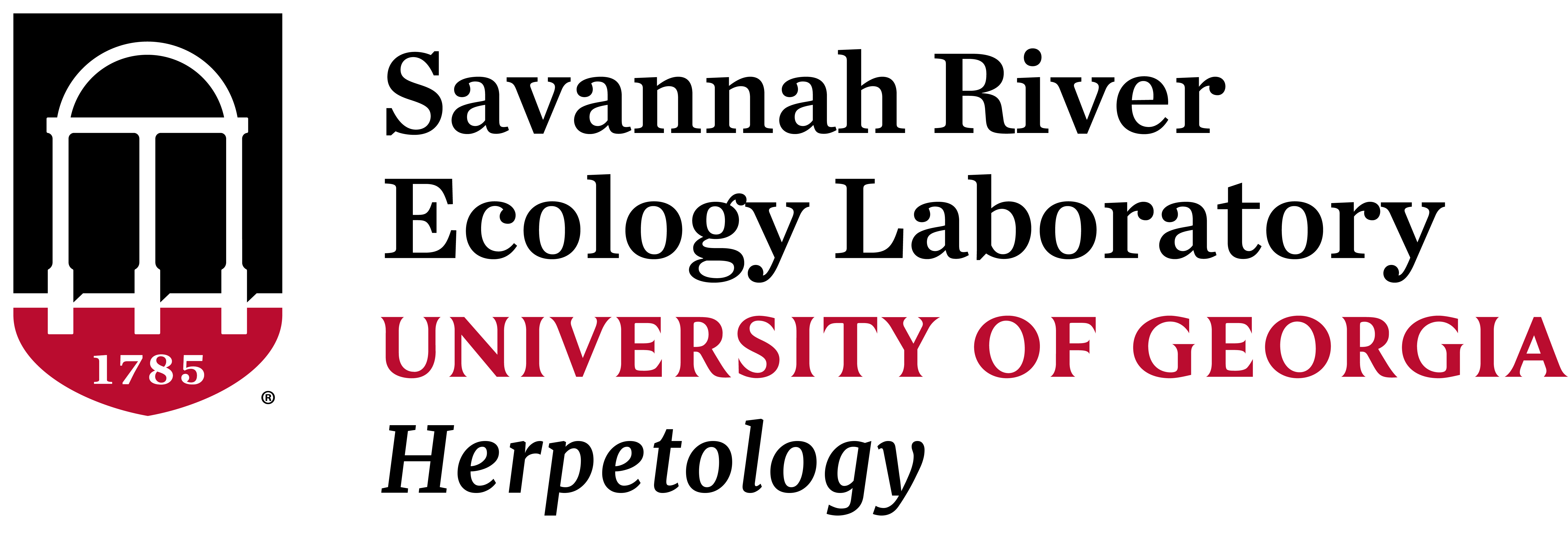Scarlet Snake (Cemophora coccinea)
Scarlet Snake (Cemophora coccinea)
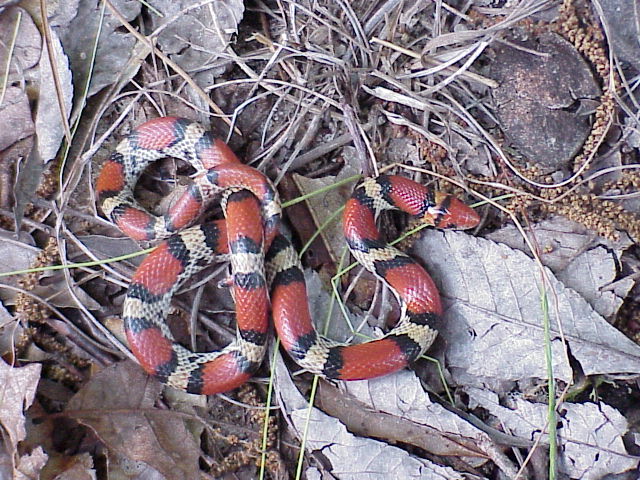


Description: A small, slender snake reaching up to 51 cm (20 in). Marked with alternating red, black, and white or yellow bands, but unlike the Scarlet Kingsnake (Lampropeltis elapsoides), the bands do not encircle the body, and the venter is solid white, pink, or gray. The venomous Eastern Coral Snake (Micrurus fulvius) differs by having a black snout and red bands that touch yellow. Scarlet Snakes usually have a pointed, red snout, and their red bands are wider than those of other colors. Juveniles resemble adults.
Range and Habitat: Occurs throughout the Coastal Plain and Piedmont of the southeastern United States, from New Jersey west to Oklahoma and throughout Florida. Most common in the Coastal Plain and Sandhills, but less abundant and scattered in the Piedmont. Absent from the mountain regions of northern Georgia and northwestern South Carolina. Prefers dry, sandy soils in pine forests and sandhill scrub, where it is an adept burrower.
Habits: A secretive, fossorial species that spends most of its life underground. Most often found beneath logs, rocks, leaf litter, or human debris such as boards or tin. Nocturnal above ground and frequently encountered crossing rural roads on warm summer nights. Diet consists primarily of reptile eggs, which they slice open with specialized enlarged teeth. May also consume small lizards, snakes, and frogs. Females lay 2–9 eggs in early summer.
Conservation Status: Generally common across its range and not protected in most areas. In Georgia, the Scarlet Snake is legally protected.
